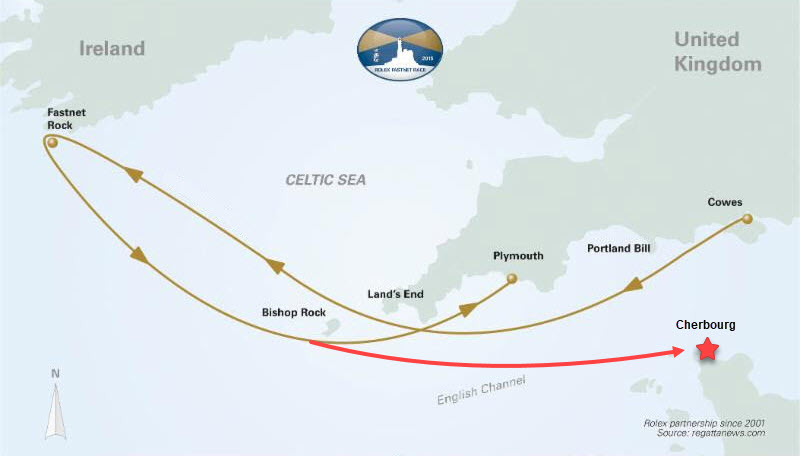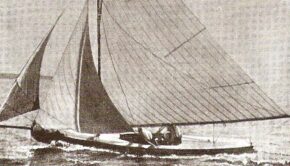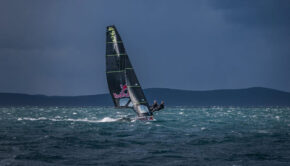When you change history, you can’t forget it
Published on April 14th, 2021
When the Royal Ocean Racing Club (RORC), organizers of the Rolex Fastnet Race, changed the finish location for the 2021 race from Plymouth, UK to Cherbourg, France, it was allegedly to permit more participation; in 2019 the race had a waiting list of 150 boats.
Whether money grab or heightened hospitality is not so much the issue as a complete disdain for history. That course from Cowes, UK around Fastnet Rock to Plymouth was a measure of boat and sailor, with tragedy and triumph recorded along that 600nm course.
So when Peter Cunningham’s MOD70 PowerPlay broke the speed record for the Fastnet course in April 2021, held previously by the MOD70 Phaedo 3 in 2015, the World Sailing Speed Record Council ratified the accomplishment for the “Original Fastnet Course”.
Not so fast, says William Nixon, who details in this report for Irish sailing publication Afloat how the original course was something different yet:
Well done to the MOD 70 PowerPlay on almost managing to make the 24 hours for a Fastnet Race course finishing at Plymouth. But we’d suggest in all modesty (we’re tops for it) that what they were sailing was NOT the original Fastnet Race course.
Back in the 1920s when the notion of a Fastnet race was first mooted, the conservative Cowes establishment would have nothing to do with such a crazy idea, and thus the first Fastnet Race in 1925 started eastward out of Solent from the Royal Victoria YC at Ryde, and then westward south of St Catherine’s Point to sail the “traditional” course thereafter, finishing at Plymouth.
This was the course until 1949 except for 1935, when it started westward from Royal Solent YC at Yarmouth. The record for the original course was set by the new Fife 70ft Bermudan cutter Hallowe’en (now Royal Irish YC) in 1926 (the race was annual until 1931), and Hallowe’en’s record stood until 1939, when it was bested by 86ft German Navy yawl Nordwind.
Nordwind – like Hallowe’en – is still on the go, as a much-loved Henry Gruber-designed classic. In 1939, she was raced by the Kriegsmarine. They looked awfully smart at the prize-giving in Plymouth in their Hugo Boss-designed uniforms with Heil Hitler salutes all round, and all this just a few days before the start of World War II.
Since then, we’ve had World War III being fought over the change to the Fastnet Race course for 2021, proposing a new and capacious finish port at Cherbourg. But in recent days, with France going into super-lockdown to try and eradicate the latest wave of COVID-19 with every self-respecting country worldwide now claiming its own even more potent variant, Cherbourg may still be off-limits by August.
However, if push comes to shove, instead of sheepishly returning to the traditional Plymouth finish, the more realistic will suggest that the RORC will simply choose to re-locate the finish right back into Cowes (maybe what they’ve wanted all along), albeit with the Isle of Wight left to port to avoid the total tidal gate east of The Needles.
That would handily take the finishing fleet cleanly past Ryde, an ideal finish point. But having been dumped twice – in 1935 and 1949 – as the starting club, it would be understandable if the RVYC told them to do something rather unnatural with the finish line for the Fastnet Race 2021.










 We’ll keep your information safe.
We’ll keep your information safe.